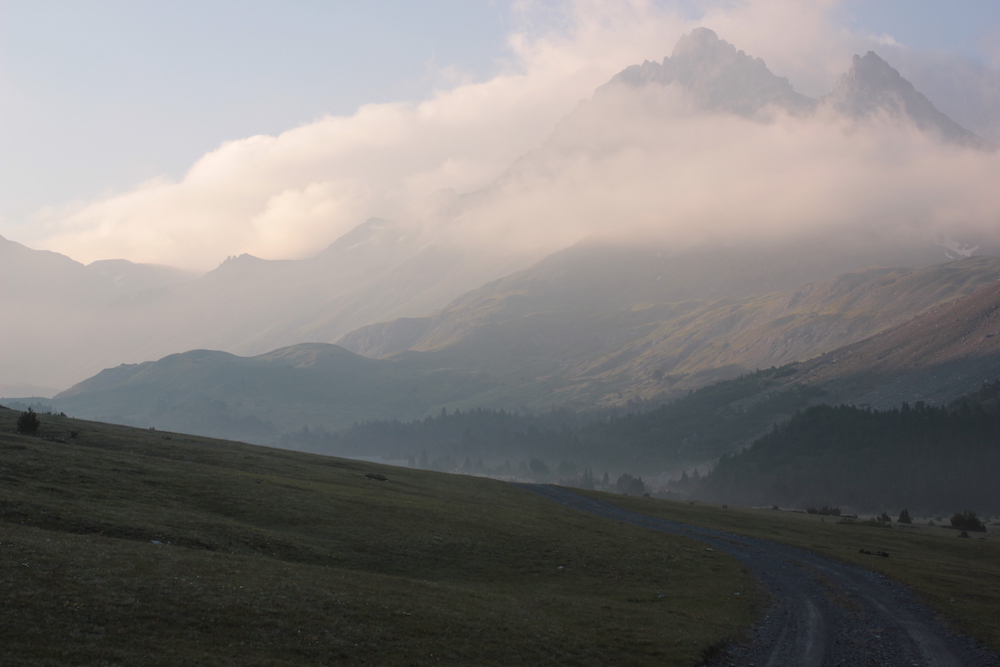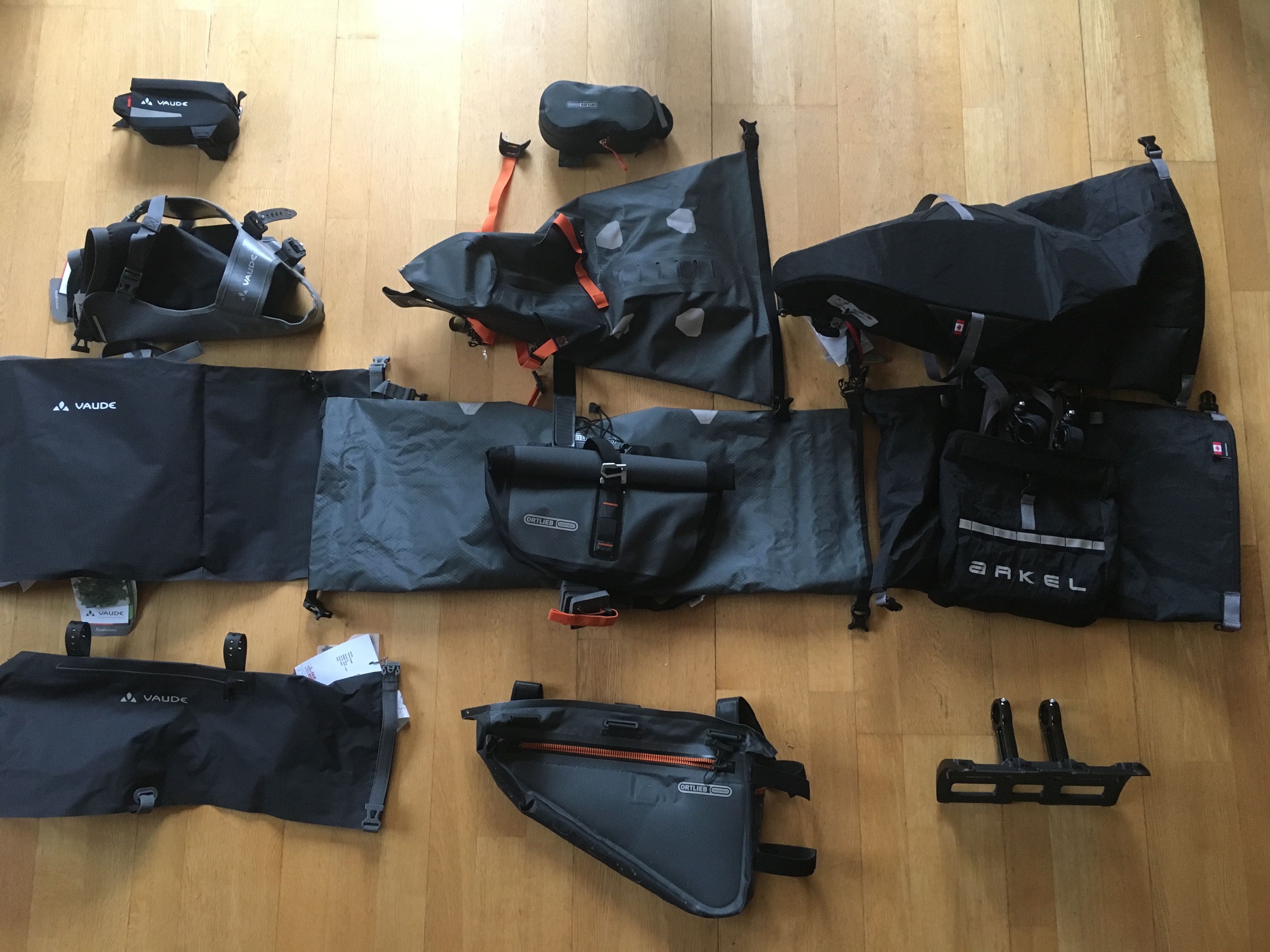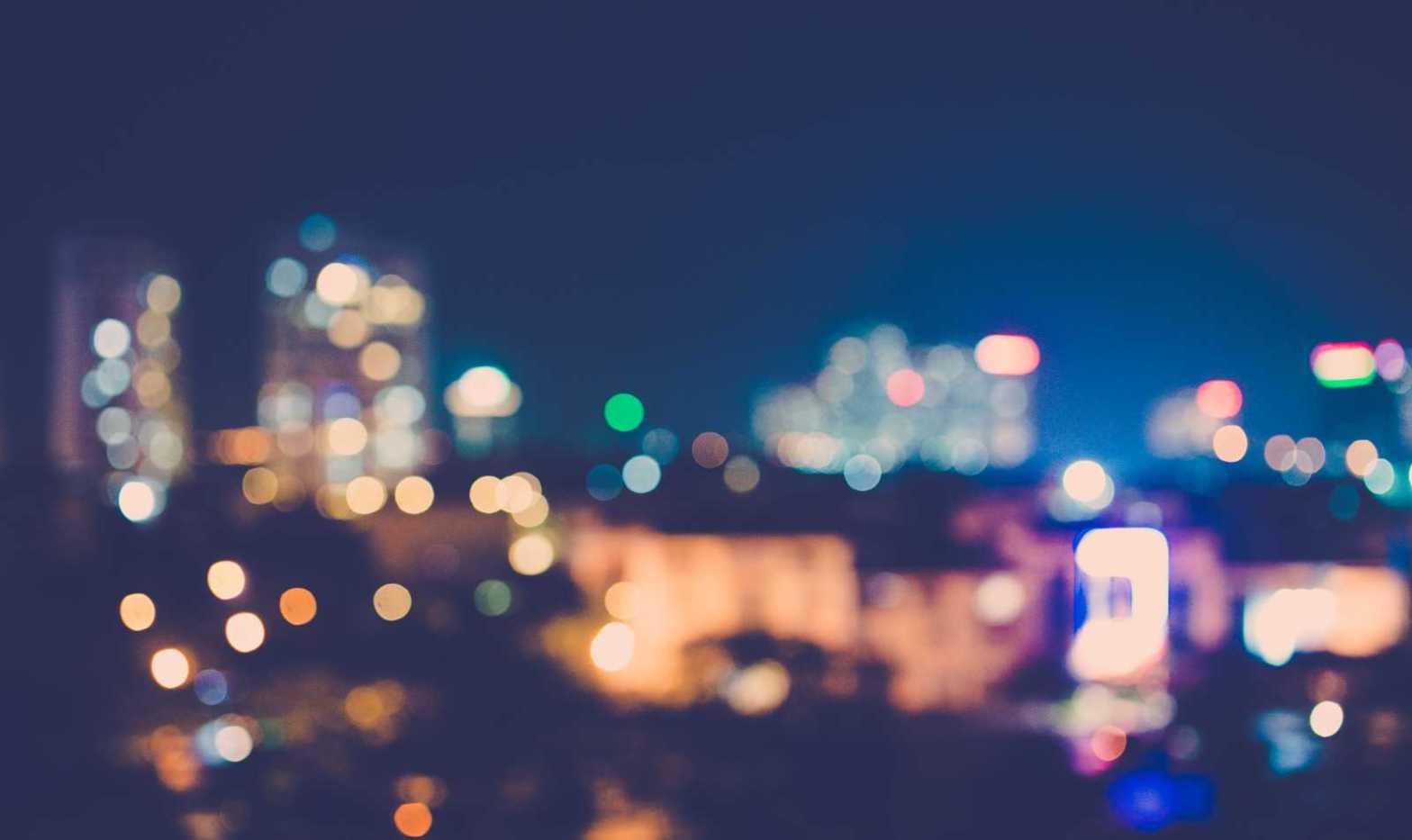I am on my way to Tuscany to ride the Tuscany trail. I will be testing various bikepacking bags and gear and will report about it. Our idea at Getchanged is to rent out bikepacking gear at low costs so that not everyone has to buy expensive stuff that finally ends up lying the cellar 360 days per year. This is the equipment Vaude, Ortlieb and Arkel provided for testing:

And this is what I needed Tofu Ton my bike. Honestly, it required some Tetris skills to match them into the bags, which have around 50l in total.

This is the result:

So, which bags did I select and why?
I selected the Ortlieb Handelbar bag because I did not manage to install the Arkel Front bag on my Surly ECR without bending cables. It is a pity because I really wanted to test the Arkel Front bag.
I selected the Ortlieb Framebag (and not the Vaude) because it attached better to the frame (it is 5cm broad and therefore attached very well to the frame). The advantage with the Vaude one is that it would have fitted my tent poles.
I selected the Ortlieb Tuptube bag (not the Vaude one) because it is waterproof. However, it is not ideal, as the zipper is very difficult to open while cycling.
I selected the Arkel Saddlebag, wich I tested various times now and which is great (the Ortlieb one with 11l was too small). It has a very robust construction and I plan to attach my solar panel on it.
I am additionally using the Salsa EXP anything cradle with an Exped bag because I needed some more space somewhere. Since the bag is very easy to detach from the cradle, I will put my valuables in it. And I am using the Salsa cradles in the forks.
I am using the bike bag Trazbag.com, which apparently allows me to take my bike on the train as handluggage. I will have to switch trains around 4 times and will see how that works. The bike now travels with me:

I also plan to use it as footprint to protect my tent.
Finally, I got a 5w Solar Panel which is as large as a A4 sheet and I hope to power my phone with it to navigate with Komoot.























